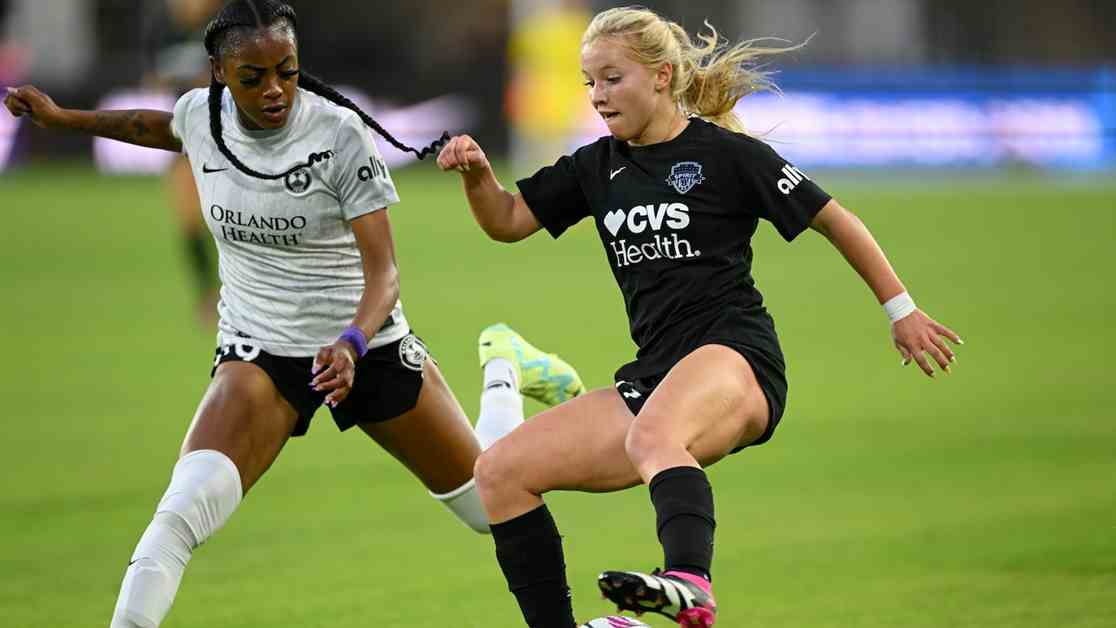Young Talent Revolutionizing Women’s Soccer in the US
Every day, Chloe Ricketts wraps up her work and this awkward thing happens: She splits off from her co-workers and watches as they walk en masse in a different direction. Ricketts, the Washington Spirit forward who turned 17 last month, heads to a separate locker room, where she showers and changes alone. “It gets a little funny when I see all them walk past and I have to go to my locker room,” Ricketts said recently, after a rainy morning training session at the Spirit’s facility in Leesburg, Va.
The same scene plays out daily for clubs across the National Women’s Soccer League, where rosters are suddenly sprinkled with teens who practice and play alongside adults. With the NWSL’s minimum age requirement struck down by the courts and clubs desperate to find the sport’s next global stars, a youth movement is rapidly revamping the culture of a league just three years removed from a sweeping abuse scandal, reshaping all levels of women’s soccer in the United States in the process.
Since new protocols governing the signing of underage players were adopted last year, 10 players have entered the league before turning 18, three of whom were just 15 when they signed pro contracts. This season, nearly 1 in 19 NWSL players was younger than 20 when the preseason began, having chosen to skip the college game and, in some cases, bypass high school soccer altogether.
“People are genuinely fascinated by phenoms and young talent,” Jessica Berman, the NWSL commissioner, told journalists recently, acknowledging the teens’ growing role in the league.
Players, coaches, and officials across the sport view the trend as an important step toward developing players who can compete on a global stage, including for U.S. national teams. But they’re still grappling with the implications of a rule change that makes the NWSL an outlier among American sports leagues.
The NHL and MLB require most athletes to be at least 18. The NBA’s minimum age is 19; the WNBA’s is 22 for American players; and the NFL requires prospects to be at least three years removed from high school. Only MLS allows American-born players under 18 to sign contracts, and most of those players are assigned to a developmental league or academies specifically designed to develop young talent — a system similar to European soccer.
But the 12-year-old NWSL doesn’t have the funding to support that type of infrastructure, so teens are training and competing side-by-side with players many years older.
League officials and player safety advocates are watching closely. So are college coaches, who are losing top recruits, and U.S. Soccer, a once-dominant force suddenly facing challenges from across the globe.
“As always with these situations, it creates choice,” said Tracey Kevins, the U.S. Under-20 coach and head of development for the women’s youth national teams. “I think where we come from is that we always want the player to be able to make the choice that best suits them. And it is very, very individual.”
It’s also in flux. Around the sport, many acknowledge that more changes are likely, though the specifics of how things shake out are uncertain.
“We’re living through a moment in American soccer where the youth system — this pay-to-play model — is failing,” said Meghann Burke, executive director of the NWSL Players Association. “I think everyone’s trying to figure out what’s the right approach to development. We need to keep kids thinking [that] the reason we play sports is to create healthier lifestyles. … So it’s a system that is still finding its way, and I think we have to be really careful.”
**A phenom’s fight**
The door was kicked open by Olivia Moultrie, a soccer phenom who began training with the Portland Thorns at 13. Convinced she could succeed as a pro, she sued the league in 2021, claiming its age restriction violated federal antitrust laws because it presented an “unlawful barrier to her participation.”
Moultrie filed the lawsuit just before the league was rocked by a sexual abuse scandal that led to five of the NWSL’s 10 head coaches being dismissed or resigning, including Chicago’s Rory Dames, who was accused of emotional abuse and using offensive language, and North Carolina’s Paul Riley, who was accused of sexual misconduct and verbal abuse. (Both coaches have denied those allegations.)
“I lost a lot of sleep over the idea that we had a 15-year-old young woman trying to get in the league at the same time Paul Riley was still coaching in it,” Burke said. “We couldn’t say: ‘Are you sure? Maybe you and your parents should pump the brakes here. You may not want to come into this league just yet.’ That really wasn’t our story to tell until the players who survived that were ready to speak about it.”
The court granted Moultrie a preliminary injunction, and she later reached a settlement with the league allowing her to play for the Thorns, effectively paving a new path for elite teen players.
“That wasn’t the intent going into it, but of course it’s pretty cool to see the game grow that way,” Moultrie, now 18 and in her fourth season, recently told ESPN, “because that was the intent the whole time: that [if] you’re good enough, you’re old enough. There shouldn’t be some number that’s stopping you from going toward [your goal].”


